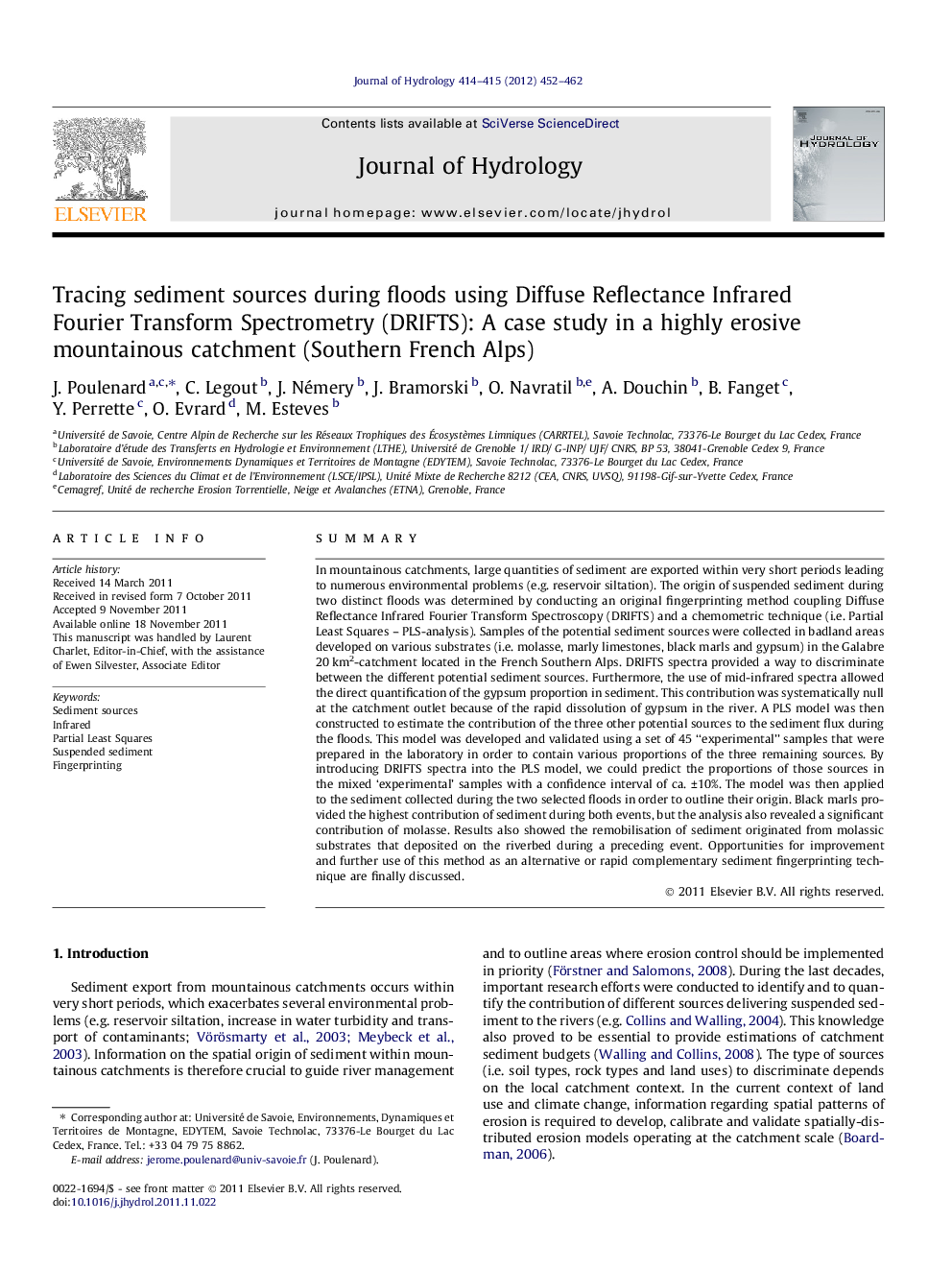| کد مقاله | کد نشریه | سال انتشار | مقاله انگلیسی | نسخه تمام متن |
|---|---|---|---|---|
| 4577244 | 1630004 | 2012 | 11 صفحه PDF | دانلود رایگان |

SummaryIn mountainous catchments, large quantities of sediment are exported within very short periods leading to numerous environmental problems (e.g. reservoir siltation). The origin of suspended sediment during two distinct floods was determined by conducting an original fingerprinting method coupling Diffuse Reflectance Infrared Fourier Transform Spectroscopy (DRIFTS) and a chemometric technique (i.e. Partial Least Squares – PLS-analysis). Samples of the potential sediment sources were collected in badland areas developed on various substrates (i.e. molasse, marly limestones, black marls and gypsum) in the Galabre 20 km2-catchment located in the French Southern Alps. DRIFTS spectra provided a way to discriminate between the different potential sediment sources. Furthermore, the use of mid-infrared spectra allowed the direct quantification of the gypsum proportion in sediment. This contribution was systematically null at the catchment outlet because of the rapid dissolution of gypsum in the river. A PLS model was then constructed to estimate the contribution of the three other potential sources to the sediment flux during the floods. This model was developed and validated using a set of 45 “experimental” samples that were prepared in the laboratory in order to contain various proportions of the three remaining sources. By introducing DRIFTS spectra into the PLS model, we could predict the proportions of those sources in the mixed ‘experimental’ samples with a confidence interval of ca. ±10%. The model was then applied to the sediment collected during the two selected floods in order to outline their origin. Black marls provided the highest contribution of sediment during both events, but the analysis also revealed a significant contribution of molasse. Results also showed the remobilisation of sediment originated from molassic substrates that deposited on the riverbed during a preceding event. Opportunities for improvement and further use of this method as an alternative or rapid complementary sediment fingerprinting technique are finally discussed.
► Tracing the origin of suspended matter is one of the main challenges in hydrology.
► We develop a new spectroscopic approach for tracing the sources of sediment.
► The DRIFTS signature is discriminant of the lithological sources.
► The DRIFTS signature is conservative in the hydrological network.
► The DRIFTS–PLS approach allows quantitative reconstitution of sediment sources.
Journal: Journal of Hydrology - Volumes 414–415, 11 January 2012, Pages 452–462